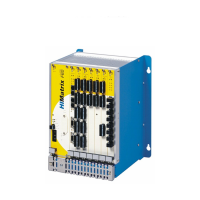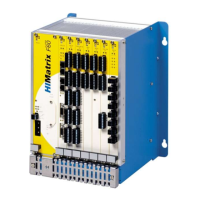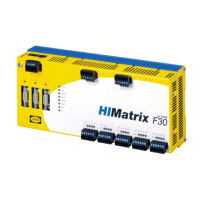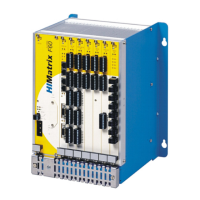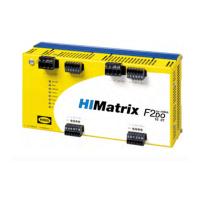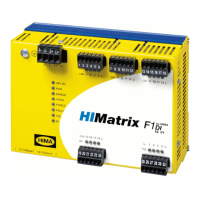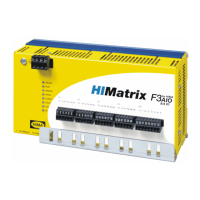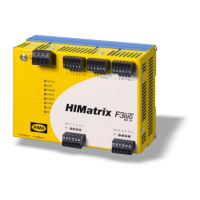HIMatrix 8 Safety-related Aspects of the User Program
HI 800 023 E Rev. 1.01 Page 47 of 72
The I/O concept of the system must include an analysis of the field circuits, i.e. the type of
sensors and actuators:
Sensors (digital or analog).
- Signals during normal operation ('de-energize-to-trip' principle with digital sensors,
'life-zero' with analog sensors).
- Signals if a fault occurs.
- Definition of required safety-related redundancies (1oo2, 2oo3)
(see Chapter
Increasing the SIL of Sensors and Actuators)
- Discrepancy monitoring and reaction.
Actuators.
- Positioning and activation during normal operation.
- Safe reaction/positioning at shutdown or after power loss.
Programming goals for user program:
Easy to understand.
Easy to trace and follow.
Easy to modify.
Easy to test.
8.1.2 Functions of the User Program
Programming is not subject to hardware restrictions. The user program functions can be
freely programmed.
Only elements complying with IEC 61131-3 together with their functional requirements
are permitted within the logic.
The physical inputs and outputs usually operate in accordance with the 'de-energize-to-
trip' principle, i.e. their safe state is 0. This must be taken into account during
programming.
The user program includes meaningful logic and/or arithmetic functions irrespective of
the 'de-energize-to-trip' principle of the physical inputs and outputs.
The program logic should be clear and easy to understand and well documented to
assist in debugging. This includes the use of functional diagrams.
Any kind of negations are permitted.
Fault signals from the inputs or outputs, or from logic blocks must be evaluated.
The "packaging" of functions in user-defined function blocks and functions consisting of
standard functions is important. This ensures that a program can be clearly structured in
modules (functions, function blocks). Each module can be considered individually; the user
can create a comprehensive, complex function by grouping the individual modules to form a
single larger module or a single program.
8.1.3 Declaration of Variables and Signals
A variable is a placeholder for a value within the program logic. The variable name is used
to symbolically address the storage space containing the stored value. A variable is created
in the variable declaration for the program or function block.
Number of characters for the
names of variables
Version beyond 7 31
Version prior to 7 256
Table 26: Length for the Name of the Variable
